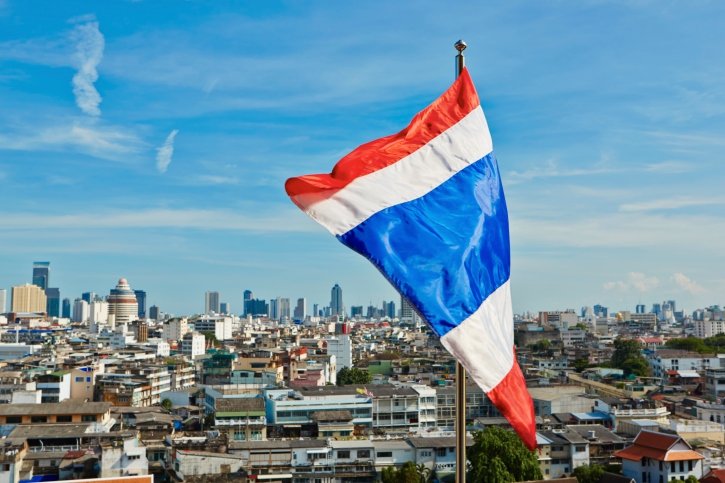Popularly known as the “Land of Smiles” and a top tourist destination, Thailand does not typically feature much in conversations about data center developments in the Asia Pacific region. At least one analyst firm that DatacenterDynamics approached for this article declined to comment, saying they do not track developments in the country closely.
Yet Thailand’s data center industry has been growing steadily in recent years, fuelled in part by the same potent mix of developments seen in other parts of Southeast Asia, including the widespread availability of smartphones, skyrocketing social media use, and an increasing dependency on cloud services.
Analysts at Frost & Sullivan say that the data center industry in Thailand experienced record growth in 2013, jumping 23%, and taking in more than 1,700M baht (US$52.3M) in revenue. So what aspects of Thailand should potential data center operators be aware of?
An eye on Thailand
With a population of 67 million, Thailand is also ranked among the largest countries in Southeast Asia, and it possesses a robust economy and infrastructure that is substantially more developed than many of its neighbors.
It is also worth noting that the country has 26 million Internet users according to 2013 figures released by the National Broadcasting and Telecommunications Commission (NBTC) in Thailand. Its mobile subscriber base stands at 84 million, which works out as a mobile penetration rate of 125 percent.
When DatacenterDynamics FOCUS spoke to Singapore-based 1-Net managing director Wong Ka Vin recently about possible growth areas in the region, he pointed out that Thailand has a mature and technically sound economy in spite of its political troubles. It would be “foolish” not to pay any attention to Thailand, said Wong, who also noted that Bangkok is one of three top locations that his firm has its eyes on for future growth.
Another major consideration is how Thailand is strategically positioned as the gateway into countries that make up the Greater Mekong Subregion (GMS), many of which share their borders with Thailand. The GMS consists of the countries bound together by the Mekong River, and consists of Cambodia, Laos, Myanmar, Thailand, Vietnam and a small part of China. The appeal of the GMS lies in its industry base, population and the increasing number of multinational corporations (MNC) operating there.
The Mekong region is certainly of special interest to telecommunication operators operating in the region. In a call about the extension of the Asia Submarine-cable Express (ASE) to neighboring Cambodia in June, Carmelo Ople, the director of Global Business Solutions, Global Connectivity at NTT Singapore talked about the potential of reaching the large population and land area within the Mekon area.
Separately, Bernadette Noujaim Baldwin, Telstra Global's head of connectivity and platforms also said that Telstra Global is looking to strengthen connectivity into the Mekong region when asked about plans for growth in the region. “We’re looking to strengthen the connectivity into [the] Mekong region, particularly in countries such as Vietnam, Cambodia, Lao, and also Myanmar,” said Noujaim Baldwin in July this year.
Increasing the country’s appeal
Political stability aside, there remains a number of areas that need to be addressed to advance the data center agenda in Thailand. On his part, Wong took pains to stress that the existing telecom regulatory standards in Thailand needs to be evolved further by the government, with a focus on growth rather than the protection of their internal interests.
DatacenterDynamics FOCUS also spoke to Ajay Chakravarty, the APAC director of data center talent advisory firm Datacenterpeople to get a more rounded understanding of the data center scene in Thailand.
According to Chakravarty, a primary issue in Thailand is accessing adequate manpower that is skilled in the relevant areas of data center operation. While he noted that engineering colleges are producing well-trained graduates, it remains to be seen whether they have the requisite understanding of critical infrastructure that working in a data center mandates.
“There is no such program in the country where they can bring in trained workers in this area,” he said. Though Chakravarty did not say so, this seems to suggest that the government may not have affixed as much importance to the data center market.
Moreover, anecdotal evidence also suggests that language may be a barrier. Compared to regional competitors such as Hong Kong, Singapore and Malaysia, Thai employees may be more conversant in Thai than English in the workplace, which may make it more challenging for companies hoping to make up the headcount by temporarily bringing in some professionals from out of town.
Overall though, Chakravarty, who says he is currently working on projects in the country, expressed optimism about Thailand as a data center location. “At the macro level, there is market potential,” he said. “It’s a booming economy, it’s a very interesting economy.”
As we noted in “The evolving ASEAN data center market” in July, the many opportunities in ASEAN, coupled with the universal growth of smartphones and social media is likely to drive up data consumption and the use of cloud services. This in turn is expected to significantly increase demand for data centers in the region--including in Thailand.

